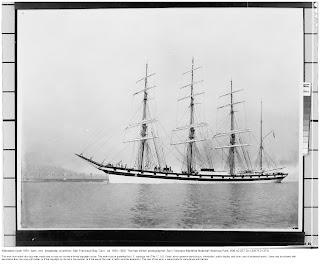The next recipe in the Library's copy of The captain's table : 18 recipes for famous dishes served aboard the S.S. United States and S.S. America is for poulet en cocotte à la Paysanne:
Rub the cavity of a 4-pound roasting chicken with salt and pepper and truss it. Melt 4 tablespoons butter in a large flameproof casserole and in it sauté the chicken over moderate heat, turning it to brown all sides. Remove the chicken to an earthenware casserole. To the juices remaining in the cocotte add 1/2 cup each of white wine and chicken stock and stir in 2 or 3 tablespoons rich veal juice or demi-glace sauce (or any good-quality meat extract). Reduce the mixture over high heat by one half. Coat the chicken with the sauce and surround it with 2/3 cup each of sliced carrots and turnips, which have been steamed in butter in another pan with a little sugar and salt, 12 small onions, glazed, 12 potato balls browned in butter and 1/2 cup diced bacon, browned. Cover the chicken with a piece of buttered paper. Cover the casserole and roast the chicken in a hot oven (400° F) for 30 minutes. Remove the chicken to a warm platter and carve it into serving pieces. Return the pieces to the casserole and place it on a plate. Bring it to the table covered with a napkin. Serves 6.



